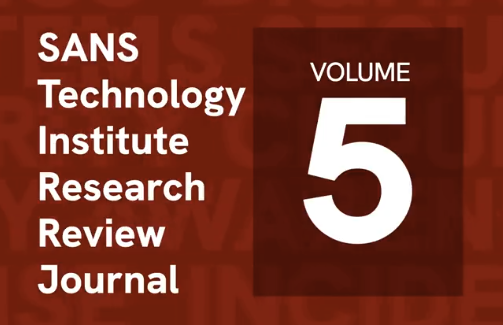Handler on Duty: Xavier Mertens
Threat Level: green
Podcast Detail
SANS Stormcast Wednesday, October 8th, 2025: FreePBX Exploits; Disrupting Teams Threats; Kibana and QT SVG Patches
If you are not able to play the podcast using the player below: Use this direct link to the audio file: https://traffic.libsyn.com/securitypodcast/9646.mp3
My Next Class
| Application Security: Securing Web Apps, APIs, and Microservices | Dallas | Dec 1st - Dec 6th 2025 |
| Application Security: Securing Web Apps, APIs, and Microservices | Orlando | Mar 29th - Apr 3rd 2026 |
FreePBX Exploit Attempts (CVE-2025-57819)
A FreePBX SQL injection vulnerability disclosed in August is being used to execute code on affected systems.
https://isc.sans.edu/diary/Exploit%20Against%20FreePBX%20%28CVE-2025-57819%29%20with%20code%20execution./32350
Disrupting Threats Targeting Microsoft Teams
Microsoft published a blog post outlining how to better secure Teams.
https://www.microsoft.com/en-us/security/blog/2025/10/07/disrupting-threats-targeting-microsoft-teams/
Kibana XSS Patch CVE-2025-25009
Elastic patched a stored XSS vulnerability in Kibana
https://discuss.elastic.co/t/kibana-8-18-8-8-19-5-9-0-8-and-9-1-5-security-update-esa-2025-20/382449
QT SVG Vulnerabilities CVE-2025-10728, CVE-2025-10729,
The QT group fixed two vulnerabilities in the QT SVG module. One of the vulnerabilities may be used for code execution
https://www.qt.io/blog/security-advisory-uncontrolled-recursion-and-use-after-free-vulnerabilities-in-qt-svg-module-impact-qt
| Application Security: Securing Web Apps, APIs, and Microservices | Dallas | Dec 1st - Dec 6th 2025 |
| Application Security: Securing Web Apps, APIs, and Microservices | Orlando | Mar 29th - Apr 3rd 2026 |
| Network Monitoring and Threat Detection In-Depth | Amsterdam | Apr 20th - Apr 25th 2026 |
| Application Security: Securing Web Apps, APIs, and Microservices | San Diego | May 11th - May 16th 2026 |
Podcast Transcript
Hello and welcome to the Wednesday October 8, 2025 edition of the SANS Internet Storm Centers Stormcast. My name is Johannes Ullrich, recording today from Denver, Colorado. And this episode is brought to you by the SANS.edu graduate certificate program in Incident Response. In diaries today I wrote about exploit attempts that we have been seen against FreePBX. FreePBX is the popular voice over IP system and it had a critical vulnerability disclosed about two months ago. This vulnerability had already been exploited at the time it was disclosed and yes of course many of these FreePBX systems hadn't been patched at the time. What we are seeing here is an interesting way to leverage SQL injection to actually achieve remote code execution. FreePBX maintains a database table called cronjobs. That table can be used to essentially add system cronjobs via the SQL injection vulnerability. So the SQL injection vulnerability is just used to insert an additional row into this table which will then launch a cronjobs every minute. That cronjobs will create a file in the web document root directory that just echoes back. Well that the system is essentially vulnerable. It does also echo back the output of uname-a and then deletes the file deletes itself which I don't think actually makes a big difference because the cronjobs keeps running and will continuously recreate the file. But the file it's a PHP file so it's only executed if it's actually loaded in a browser. At this point we haven't really seen any attempts to access this file but our honeypots aren't really sort of claiming to be vulnerable so it's possible that the attacker figures out after trying to deploy this particular file using the vulnerability that the exploit actually didn't work. Microsoft published a very extensive blog post about disrupting threats targeting Microsoft Teams. In the first part of this blog post they are discussing various threats that Teams is exposed to. They analyze the entire attack chain that some of the attackers have taken the past. How they did reconnaissance. How they gained initial access. How they then gained persistent access to a particular Teams environment. We have talked about some of the methods before like for example the abuse of device codes with Teams. Microsoft is also explaining how to protect yourself from these different attacks at every stage of the attack chain. So multi-factor altercation that should be a given at this point but the advice goes way beyond that. For example just-in-time access for privileged accounts like your Teams administrators but also how to secure some of the endpoints that you're using to connect to Teams. Very good blog post. I think anybody managing a Teams environment should probably take a look and of course pen testers, red teamers also take a look because there are a lot of tools mentioned that these attackers are using in order to successfully breach Teams environments. And we got a couple of updates to talk about. The first patch is a patch released by Elasticsearch for Kibana. The problem here is that if you allow an attacker to upload files which is a scenario that can happen when you have untrusted you essentially uploading files to Kibana well you may have a stored cross -site scripting vulnerability that of course in the context of Kibana could allow them for additional access to the system by the attacker. Patches have been made available. CVSS score of 8.7 meaning it's a high vulnerability not a critical one. Second vulnerability I want to mention is actually two vulnerabilities. Both apply to the QT-SVG module. The main reason I really cover this is first of all SVG has been in the news a couple times in recent weeks months and the first vulnerability here is a stack-based overflow. The QT group mentions this as a denial of service and it's very likely that this is not exploitable on modern systems as a remote code execution. The second one is labeled as a use after free vulnerability. It doesn't state what kind of access an attacker could gain here but it does have a CVSS score of 9 .4 suggesting that the code execution is certainly possible here. As with everything they state well if you use trusted input nothing bad can happen but on the other hand SVG is used in so many contexts and the QT-SVG library is certainly one of the main sources used to deal with SVG which is why you probably should take a look whether any of your systems need patching. Well that's it for today so thanks again for listening and thanks for liking and thanks for subscribing to this podcast and talk to you again tomorrow bye just a few of them. Reedu











